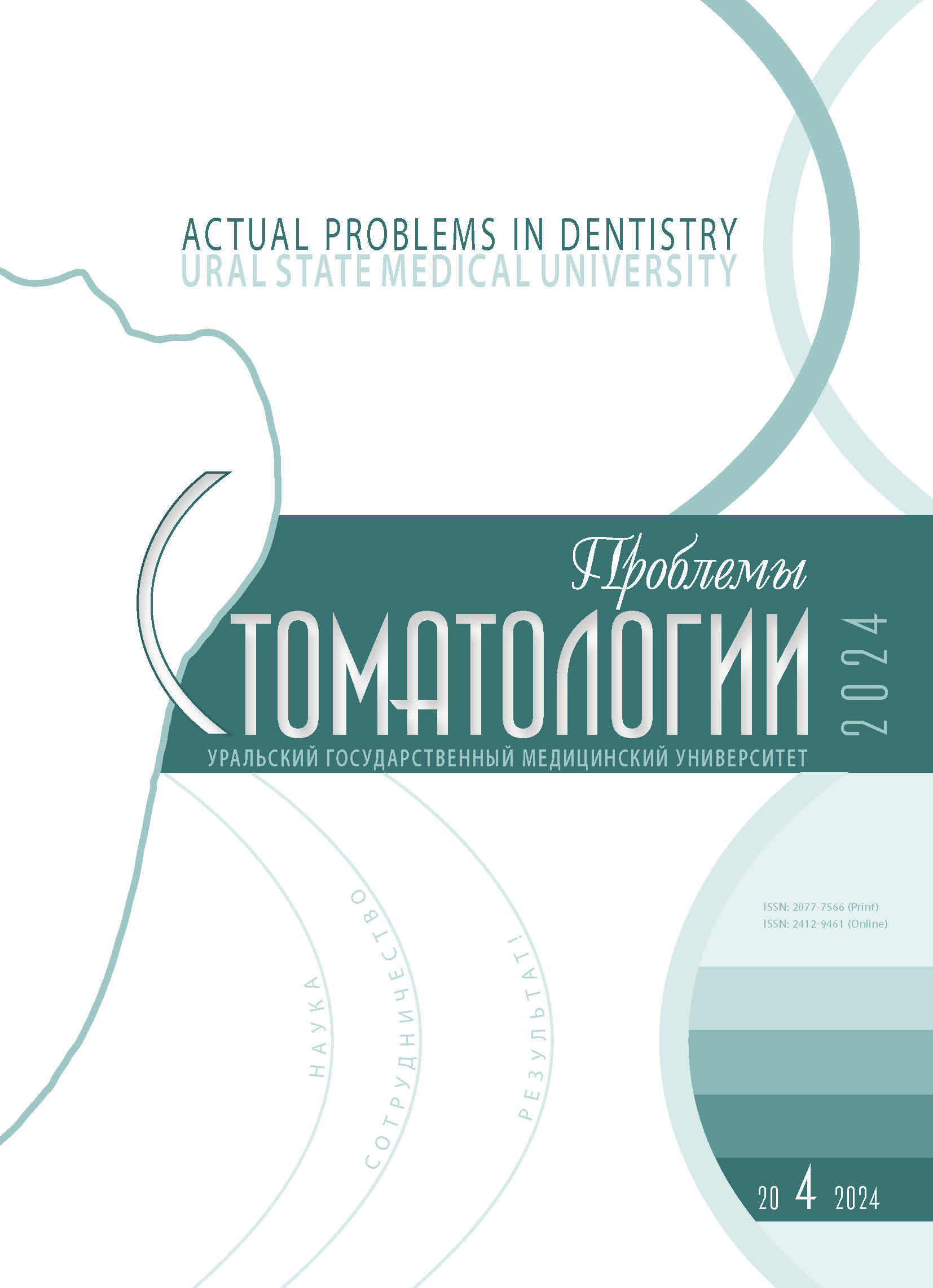employee
Smolensk, Smolensk, Russian Federation
Moscow, Moscow, Russian Federation
employee
Moscow, Moscow, Russian Federation
UDC 616.31
Modern digital dental forensics has revolutionized traditional forensic investigations in the collection, analysis and presentation of forensic evidence, and today its use is becoming routine in the investigation of the consequences of mass disasters, earthquakes and terrorist acts. Improvement of software and emergence of digital computer technologies, computer-aided design and manufacturing systems, digital records and robotics, techniques of non-contact autopsy and virtual autopsy (virtopsy) have led to acceleration and optimization of the personal identification process by extracting a large amount of data and reducing possible errors. Analysis of available domestic and foreign literary sources indicates the need for a comprehensive identification study with the use of diverse digital methods and traditional means of evaluating the available biomaterials. The aim of the study is to analyze the current scientific literature related to the application of artificial intelligence technologies in the general medical and dental personal identification practice. Methodology. This literature review was based on 25 sources from the following databases: PubMed, PubMed Central, Scopus, Elibrary, ResearchGate, Google Scholar. Results. The article presents a review of actual methods of digital forensic identification of a person using artificial intelligence technologies. The article covers modern aspects of diagnostics and complex planning of identification study in order to effectively resolve medico-legal and dental issues. Conclusions. Based on the performed literature analysis a conclusion can be drawn up that depending on the complexity and specificity of the tasks set in the process of personal identification, the optimal ways of their operational solution are to be determined, and modern digital methods of research with the use of artificial intelligence technology are increasingly being prioritized. In summary, the innovative nature of the technologies used, as well as the inevitability of introduction of specialized digital software by the world scientific community into the professional practice of personal identification shall be noted.
artificial intelligence, personal identification, digital dentistry, forensic science, thanatology, computer technology
1. Kim S, Lee YH, Noh YK, Park FC, Auh QS. Age-group determination of living individuals using first molar images based on artificial intelligence // Sci Rep. 2021;11(1): 1073. doi:https://doi.org/10.1038/s41598-020-80182-8. PMID: 33441753.
2. Wang X, Liu Y, Miao X, Chen Y, Cao X, Zhang Y, et al. DENSEN: a convolutional neural network for estimating chronological ages from panoramic radiographs // BMC Bioinformatics. 2022;23(3): 426. doi:https://doi.org/10.1186/s12859-022-04935-0
3. Shen S, Liu Z, Wang J, Fan L, Ji F, Tao J. Machine learning assisted Cameriere method for dental age estimation // BMC Oral Health. 2021;21(1):641. doi:https://doi.org/10.1186/s12903-021-01996-0. PMID: 34911516.
4. Oliva G, Pinchi V, Bianchi I, Focardi M, Paganelli C, Zotti R, et al. Three-Dimensional Dental Analysis for Sex Estimation in the Italian Population: A Pilot Study Based on a Geometric Morphometric and Artificial Neural Network Approach // Healthc Basel Switz. 2021;10(1):9. doi:https://doi.org/10.3390/healthcare10010009. PMID: 35052173.
5. Milošević D, Vodanović M, Galić I, SubašIć M. A Comprehensive Exploration of Neural Networks for Forensic Analysis of Adult Single Tooth X-Ray Images // IEEE Access. - 2022;10:70980–1002. doi:https://doi.org/10.1109/ACCESS.2022.3187959
6. Franco A, Porto L, Heng D, Murray J, Lygate A, Franco R, et al. Diagnostic performance of convolutional neural networks for dental sexual dimorphism // Sci Rep. 2022;12(1):17279. doi:https://doi.org/10.1038/s41598-022-21294-1. PMID: 36241670.
7. Ravleen Nagi, Konidena Aravinda, N. Rakesh, Supreet Jain, Navneet Kaur, Amrit Kaur Mann. Digitization in forensic odontology: A paradigm shift in forensic investigations // J Forensic Dent Sci. – 2019;11(1):5-10. doi:https://doi.org/10.4103/jfo.jfds_55_19
8. Bassed R. Sudebnaya stomatologiya: bol'she chem prosto identifikaciya. Glavnyy vrach yuga Rossii. 2015;5(47):27-32. [Bassed R. Sudebnaja stomatologija: bol'she chem prosto identifikacija. Glavnyj vrach juga Rossii. 2015;5(47):27-32. (In Russ.)]. https://www.elibrary.ru/download/elibrary_27199583.pdf
9. Bianchi I, Oliva G, Vitale G, Bellugi B, Bertana G, Focardi M, et al. A Semi-Automatic Method on a Small Italian Sample for Estimating Sex Based on the Shape of the Crown of the Maxillary Posterior Teeth // Healthcare. 2023;11(6):845. doi:https://doi.org/10.3390/healthcare11060845
10. Kaul B, Vaid V, Gupta S, Kaul S. Forensic Odontological Parameters as Biometric Tool: A Review // Int J Clin Pediatr Dent. 2021;14(3):416–419. doi:https://doi.org/10.5005/jp-journals-10005-1967. PMID: 34720517.
11. Trezubov V.N., Popov V.L., Rozov R.A. Sudebno-stomatologicheskaya identifikaciya lichnosti pol'zovatelya polnym s'emnym protezom. Stomatologiya. 2020;99(1): 43 48. [V.N. Trezubov, V.L. Popov, R.A. Rozov. Dental forensic identification of the user of a complete removable denture. Stomatology. 2020;99(1):43 48. (In Russ.)]. https://doi.org/10.17116/stomat20209901143
12. Li Y, Huang Z, Dong X, Liang W, Xue H, Zhang L, et al. Forensic age estimation for pelvic X-ray images using deep learning // Eur Radiol. 2019;29(5):2322–2329. doi:https://doi.org/10.1007/s00330-018-5791-6. PMID: 30402703.
13. Sarkar A, Nandineni MR. Development of a SNP-based panel for human identification for Indian populations // Forensic Sci Int Genet. – 2017;27:58-66. doi:https://doi.org/10.1016/j.fsigen.2016.12.002. PMID: 27992827.
14. Parys-Proszek A, Marcińska M, Branicki W, Pawłowski R, Kupiec T, Grzybowski T, Woźniak M, Spólnicka M, Jacewicz R. Examination of LT-DNA traces - literature overview and general recommendations of the Polish Speaking Working Group of the International Society for Forensic Genetics (ISFG-PL) // Arch Med Sadowej Kryminol – 2020;70(2-3):103-123. doi:https://doi.org/10.5114/amsik.2020.104489
15. Badam RK, Sownetha T, Babu DB G, Waghray S, Reddy L, Garlapati K, Chavva S. Virtopsy: Touch-free autopsy // J Forensic Dent Sci. – 2017;9(1):42. doi:https://doi.org/10.4103/jfo.jfds_7_16. PMID: 28584475.
16. Joseph TI, Girish KL, Sathyan P, Kiran MS, Vidya S. Virtopsy: An integration of forensic science and imageology // J Forensic Dent Sci. – 2017;9(3):111-114. doi:https://doi.org/10.4103/jfo.jfds_52_16. PMID: 29657485.
17. Franco A, Mendes SD, Picoli FF, Rodrigues LG, Silva RF. Forensic thanatology and the pink tooth phenomenon: From the lack of relation with the cause of death to a potential evidence of cadaveric decomposition in dental autopsies – Case series // Forensic Sci Int. - 2018;291:e8-12. doi:https://doi.org/10.1016/j.forsciint.2018.08.011. PMID: 30193746.
18. Safonov A.A. Sovremennaya avtomatizirovannaya daktiloskopicheskaya identifikacionnaya sistema organov vnutrennih del Rossiyskoy Federacii. Vestnik ekonomicheskoy bezopasnosti. 2021;3:179-183. [Safonov A.A. Sovremennaja avtomatizirovannaja daktiloskopicheskaja identifikacionnaja sistema organov vnutrennih del Rossijskoj Federacii. Vestnik jekonomicheskoj bezopasnosti. 2021;3:179-183. (In Russ.)]. https://doi.org/10.24412/2414-3995-2021-3-179-183
19. Domínguez-Rodrigo M, Baquedano E. Distinguishing butchery cut marks from crocodile bite marks through machine learning methods // Sci Rep. 2018;8(1):5786. doi:https://doi.org/10.1038/s41598-018-24071-1. PMID: 29636550.
20. Igumnova A.S., Igumnova V.S. Ukus kak orudie napadeniya. Kriminalisticheskoe issledovanie. Voprosy rossiyskoy yusticii. 2020;10:332-342. [Igumnova A.S., Igumnova V.S. Ukus kak orudie napadenija. Kriminalisticheskoe issledovanie. Voprosy rossijskoj justicii. 2020;10:332-342. (In Russ.)]. https://www.elibrary.ru/download/elibrary_44598455
21. Qing-nanMou, Ling-ling Ji, Yan Liu, Pei-rong Zhou, Meng-qi Han, Jia-min Zhao, Wen-ting Cui, Teng Chend, Shao-yi Du, Yu-xia Hou, Yu-cheng Guo. Three-dimensional superimposition of digital models for individual identification // Forensic Sci Int. – 2021; 318:110597. doi:https://doi.org/10.1016/j.forsciint.2020.110597. PMID: 33279768
22. Amasya H, Yildirim D, Aydogan T, Kemaloglu N, Orhan K. Cervical vertebral maturation assessment on lateral cephalometric radiographs using artificial intelligence: comparison of machine learning classifier models // Dento Maxillo Facial Radiol. 2020;49 (5):20190441. doi:https://doi.org/10.1259/dmfr.20190441. PMID: 32105499.
23. De Tobel J, Radesh P, Vandermeulen D, Thevissen PW. An automated technique to stage lower third molar development on panoramic radiographs for age estimation: a pilot study // J Forensic Odontostomatol. 2017;35(2):42–54. PMID: 29384736
24. Upalananda W, Wantanajittikul K, Na Lampang S, Janhom A. Semi-automated technique to assess the developmental stage of mandibular third molars for age estimation // Aust J Forensic Sci. 2023;55(1):23–33. doi:https://doi.org/10.1080/00450618.2021.1882570
25. Merdietio Boedi R, Banar N, De Tobel J, Bertels J, Vandermeulen D, Thevissen PW. Effect of Lower Third Molar Segmentations on Automated Tooth Development Staging using a Convolutional Neural Network // J Forensic Sci. 2020;65(2):481-486. doi:https://doi.org/10.1111/1556-4029.14182. PMID: 31487052



















